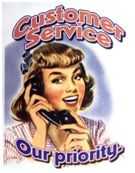|
 |
|
 |
Organizational objectives
Organizational objectives are... What an organization wants to do. Objectives are:
1. Primary The main objectives for the whole organization like profit and customer satisfaction.
2. Secondary Objectives to achieve the primary objectives (e.g. to increase production or decrease costs).
Here is an example:
Primary objective To increase profits p.a. by 10% by delighting customers.
Secondary objectives:
1. Marketing To increase customer satisfaction by 10% p.a. through fewer complaints and better after-sales service.
2. Production To improve production and product quality by 10% p.a.
3. Innovation To have at least one new product a year.
4. Employees To increase their productivity (output per employee) by 10% p.a.
How to be successful with objectives
1. Be SMART The best objectives are described by the acronym, SMART:
2. Think about your stakeholders Objectives should aim to satisfy the organization’s stakeholders – groups who are directly affected by what the organization does.
These are in order of importance (with their needs/aims in brackets):
3. Mission statement This should clearly state the organization’s purpose with reference to:
It should also be short enough to inspire employees. Examples are:
4. Vision Top managers must have a vision (a future ideal) for the organization and communicate it effectively to every employee. It may be as vague as a dream, or the same as a mission statement.
Examples are:
5. Management by objectives (MbO) This is Peter Drucker’s (pictured right) term for setting complementary objectives at all levels of the organization from the individual to the organization as a whole.
6. Inspiration Objectives must
People must believe in what the organization is doing and its vision and mission.
Key quotes explained
“The purpose of a business is to create and keep a customer” - Theodore Levitt , American marketing professor (pictured right) Levitt also added that bad work in the pursuit of customer satisfaction is better than good work on the wrong objectives. "If you don't know where you're going, any road will take you there", wrote Lewis Carroll in Alice in Wonderland
“Our strength is our unity of purpose” - Franklin D. Roosevelt ,American president (pictured right) In the best organizations everyone works together to achieve customer satisfaction.
“To pursue the unattainable is insanity” - Marcus Aurelius ,Roman emperor and philosopher (pictured right). Impossible aims will turn people off, because they can’t achieve them. But visionary aims (challenging with some hope of achievement) can inspire people to do great things. “It is not because things are difficult that we do not dare, it is because we do not dare that they are difficult”, the Greek philosopher, Seneca, said.
“Keep your eyes on the stars, and your feet on the ground” - Theodore Roosevelt , American president (pictured right) Idealistic ambition must be mixed with practical realism.
Best books
Peter Drucker, The Practice of Management (1954) An organization’s main objective is creating customers and so the whole business must be seen from their point of view. Profit is the result of achieving your objectives in marketing (i.e. customer satisfaction), innovation and productivity. Management by objectives (MBO) is vital (see point 5 above). (For more detail see The Practice of Management in the Business Books section).
Jim Collins (pictured right) and Jerry Porras (pictured right below) , Built to Last (1995) The best companies have challenging, visionary, customer oriented objectives – Big Hairy Audacious Goals
(BHAG’s). (For more detail see Built to Last in the Business Books section).
Gary Hamel (pictured right) and C.K. Prahalad (pictured right below) , Competing for the Future (1994) The best companies have:
(For more detail see Competing for the Future in the Business Books section).
Andrew Campbell (pictured right) , Marion Devine and David Young, A Sense of Mission (1990) Like the Bible, mission statements are useful only if they are believed and people are totally dedicated to carrying them out.
Alan Fox (pictured right) , Industrial Sociology and Industrial Relations (1966 article) There are two ways of looking at the relationship between management and employees (called “frames of reference”):
Richard Cyert (pictured right) and James March(pictured right below), A Behavioural Theory of the Firm (1963) Decisions in organizations are based on
Satisficing was first proposed by Herbert Simon's Administrative Behaviour (1947)
|
|
|
||
|
|
|
||
|
||
| Copyright © wisdomtowin.com All Rights Reserved | ||
|


















